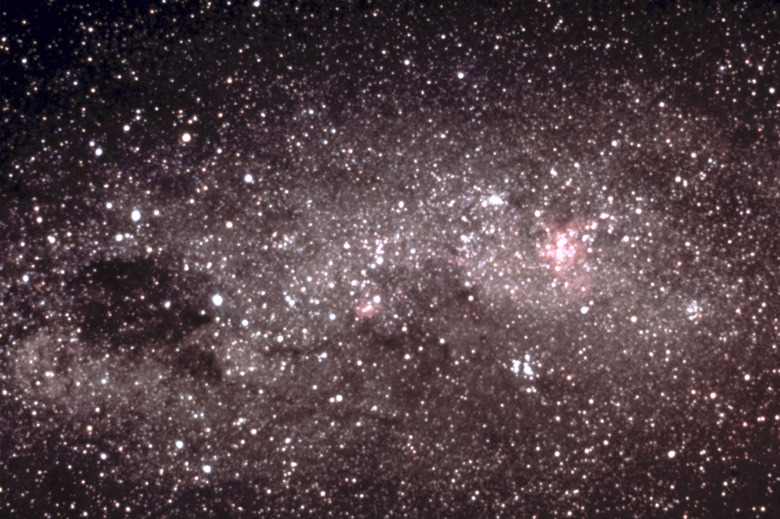Does It Rain In Space?
A simple Web search or flick of the television dial can tell you virtually all you want to know about weather across the globe, but weather beyond the Earth's atmosphere is nowhere near as familiar. While you won't find Earth-like rain in space, many celestial bodies experience their own kinds of storms, with rain in the form of liquid methane, sulfuric acid or even diamonds. Beyond the unusual rain found on other planets, space itself offers its own weather patterns thanks to solar disturbances that can trigger effects that affect life here on Earth.
The Water Cycle
The Water Cycle
Rain on Earth falls thanks to a relatively simple process called the water cycle. Water on the ground and in lakes, ponds and other bodies of water evaporates and rises into the atmosphere. Eventually, this moisture condenses to form clouds, then falls to the ground as rain, where it eventually evaporates into water vapor once more. The absence of liquid water in space, along with the reduced gravitational effects, means that Earth-like rainfall can't occur in space.
Space Weather
Space Weather
Despite the lack of rain, space does have its own distinct weather occurrences, though they are quite different from weather found on Earth. Solar disturbances from the sun prompt solar winds, radiation storms and geomagnetic storms in space. In fact, the National Oceanic and Atmospheric Administration maintains its own Space Weather Prediction Center, which acts as a meteorological center dedicated to space weather. Keeping an eye on space weather is important because this weather can actually impact life on Earth, resulting in radio or electrical blackouts, satellite disturbance and other problems. Space weather is also responsible for the glowing atmospheric gases known as the Northern Lights.
Space Rain
Space Rain
While it may not rain in space, other planets do experience their own forms of rain. On Saturn's moon Titan, liquid methane and ethane falls to the ground like water on Earth. In fact, liquid methane lakes on Titan's surface allow a methane cycle that's similar to Earth's water cycle. On Jupiter, helium condenses into drops of liquid and falls to the planet like rain, according to the University of California, Berkeley. Mars experiences dry ice storms, while sulfuric acid drops fall on Venus. Geysers on Jupiter's moon, Io, produce sulfur dioxide snow. Geysers on Saturn's moon Enceladus create snow made from water and ammonia that's often 100 meters deep or more, while pink snow made from nitrogen and methane falls on Neptune's moon Triton. Perhaps the strangest rain of all can be found on Uranus and Neptune, where highly pressurized molecules of methane crystallize to form tiny diamonds that rain down into the interior of these gaseous planets.
Gliese 581d
Gliese 581d
In 2011, French scientists spotted a faraway planet that might offer conditions similar to those found on Earth, reports CNN. Named Gliese 581d, this rocky planet that orbits a red dwarf star potentially features an atmosphere similar to that of Earth, as well as the oceans and clouds needed to produce Earth-like rainfall.
Cite This Article
MLA
Beach, Emily. "Does It Rain In Space?" sciencing.com, https://www.sciencing.com/rain-space-4290/. 24 April 2017.
APA
Beach, Emily. (2017, April 24). Does It Rain In Space?. sciencing.com. Retrieved from https://www.sciencing.com/rain-space-4290/
Chicago
Beach, Emily. Does It Rain In Space? last modified August 30, 2022. https://www.sciencing.com/rain-space-4290/
